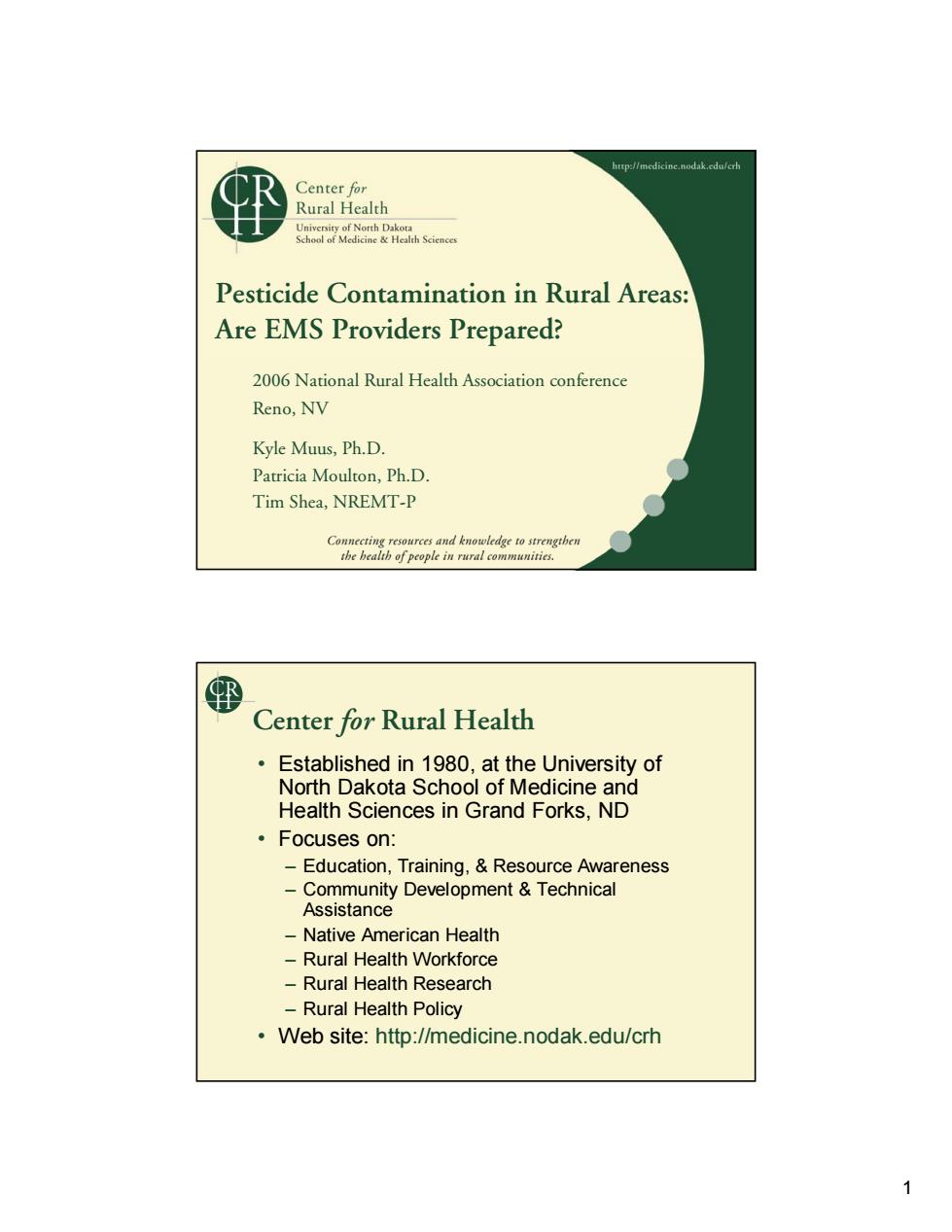
tp://medicine.nodak.edu/crl Center for Rural Health Pesticide Contamination in Rural Areas: Are EMS Providers Prepared? 2006 National Rural Health Association conference Reno,NV Kyle Muus,Ph.D. Patricia Moulton,Ph.D Tim Shea,NREMT-P Center for Rural Health Established in 1980,at the University of North Dakota School of Medicine and Health Sciences in Grand Forks,ND ·Focuses on: -Education,Training,&Resource Awareness -Community Development Technical Assistance -Native American Health -Rural Health Workforce Rural Health Research Rural Health Policy Web site:http://medicine.nodak.edu/crh 1
1 Pesticide Contamination in Rural Areas: Are EMS Providers Prepared? Kyle Muus, Ph.D. Patricia Moulton, Ph.D. Tim Shea, NREMT-P 2006 National Rural Health Association conference Reno, NV CR H Center for Rural Health • Established in 1980, at the University of North Dakota School of Medicine and Health Sciences in Grand Forks, ND • Focuses on: – Education, Training, & Resource Awareness – Community Development & Technical Assistance – Native American Health – Rural Health Workforce – Rural Health Research – Rural Health Policy • Web site: http://medicine.nodak.edu/crh

我 Background Hundreds of toxic chemicals are commonly used across the country for a variety of purposes. Agriculture workers and pesticide handlers are at greatest risk for pesticide exposure and contamination. Pesticide-contaminated individuals are a challenge for health care providers. .EMS training curricula typically possess little content on safely providing care to patients with exposure to hazardous materials. 界 What are Pesticides? ·Herbicides ·Insecticides ·Rodenticides ·Fungicides 2
2 CR H Background • Hundreds of toxic chemicals are commonly used across the country for a variety of purposes. • Agriculture workers and pesticide handlers are at greatest risk for pesticide exposure and contamination. • Pesticide-contaminated individuals are a challenge for health care providers. • EMS training curricula typically possess little content on safely providing care to patients with exposure to hazardous materials. CR H What are Pesticides? • Herbicides • Insecticides • Rodenticides • Fungicides
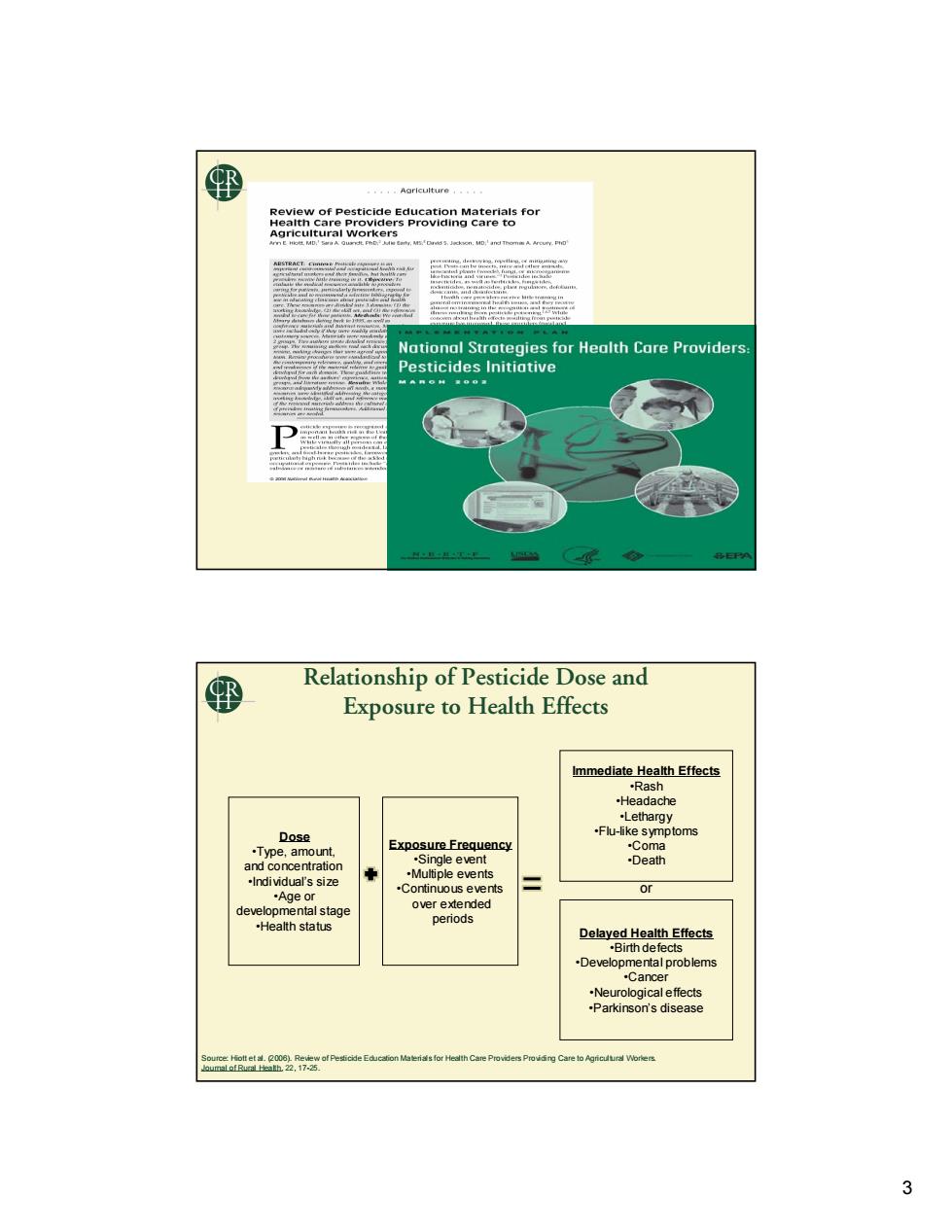
National Strategies for Health Care Provider Pesticides Initiative 我 Relationship of Pesticide Dose and Exposure to Health Effects mmediate Health E vent or DeyeaHeahEiech Develpmertalproblem pgkngnea 3
3 CR H CR H Relationship of Pesticide Dose and Exposure to Health Effects Exposure Frequency •Single event •Multiple events •Continuous events over extended periods Delayed Health Effects •Birth defects •Developmental problems •Cancer •Neurological effects •Parkinson’s disease Immediate Health Effects •Rash •Headache •Lethargy •Flu-like symptoms •Coma •Death Dose •Type, amount, and concentration •Individual’s size •Age or developmental stage •Health status or Source: Hiott et al. (2006). Review of Pesticide Education Materials for Health Care Providers Providing Care to Agricultural Workers. Journal of Rural Health, 22, 17-25
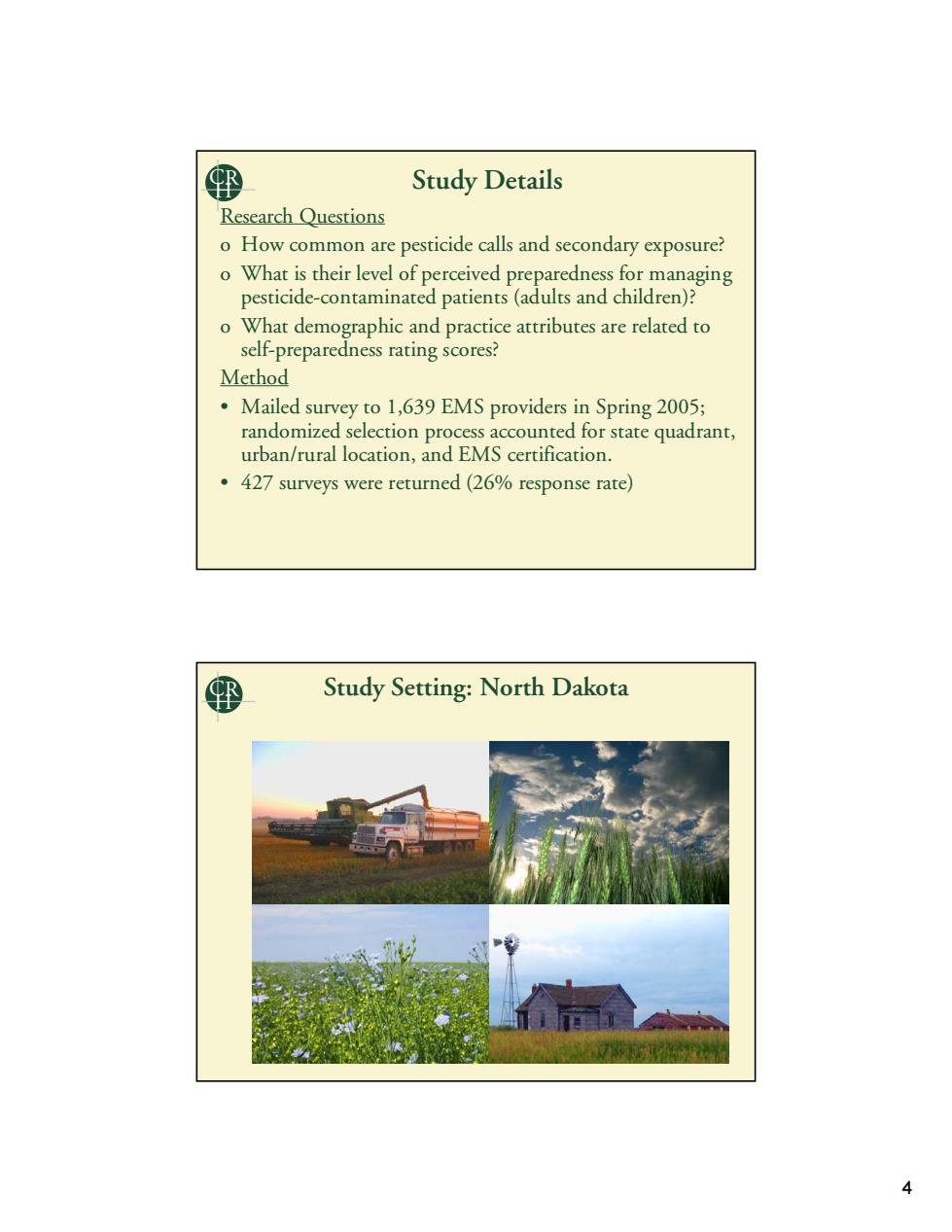
界 Study Details Research Questions o How common are pesticide calls and secondary exposure? ohat demographic and practice artribures are relared o ess rating scores? Method Mailed survey to 1,639 EMS providers in Spring 2005; .427 surveys were returned(26%response rate) Study Setting:North Dakota 4
4 CR H Research Questions o How common are pesticide calls and secondary exposure? o What is their level of perceived preparedness for managing pesticide-contaminated patients (adults and children)? o What demographic and practice attributes are related to self-preparedness rating scores? Method • Mailed survey to 1,639 EMS providers in Spring 2005; randomized selection process accounted for state quadrant, urban/rural location, and EMS certification. • 427 surveys were returned (26% response rate) Study Details CR H Study Setting: North Dakota
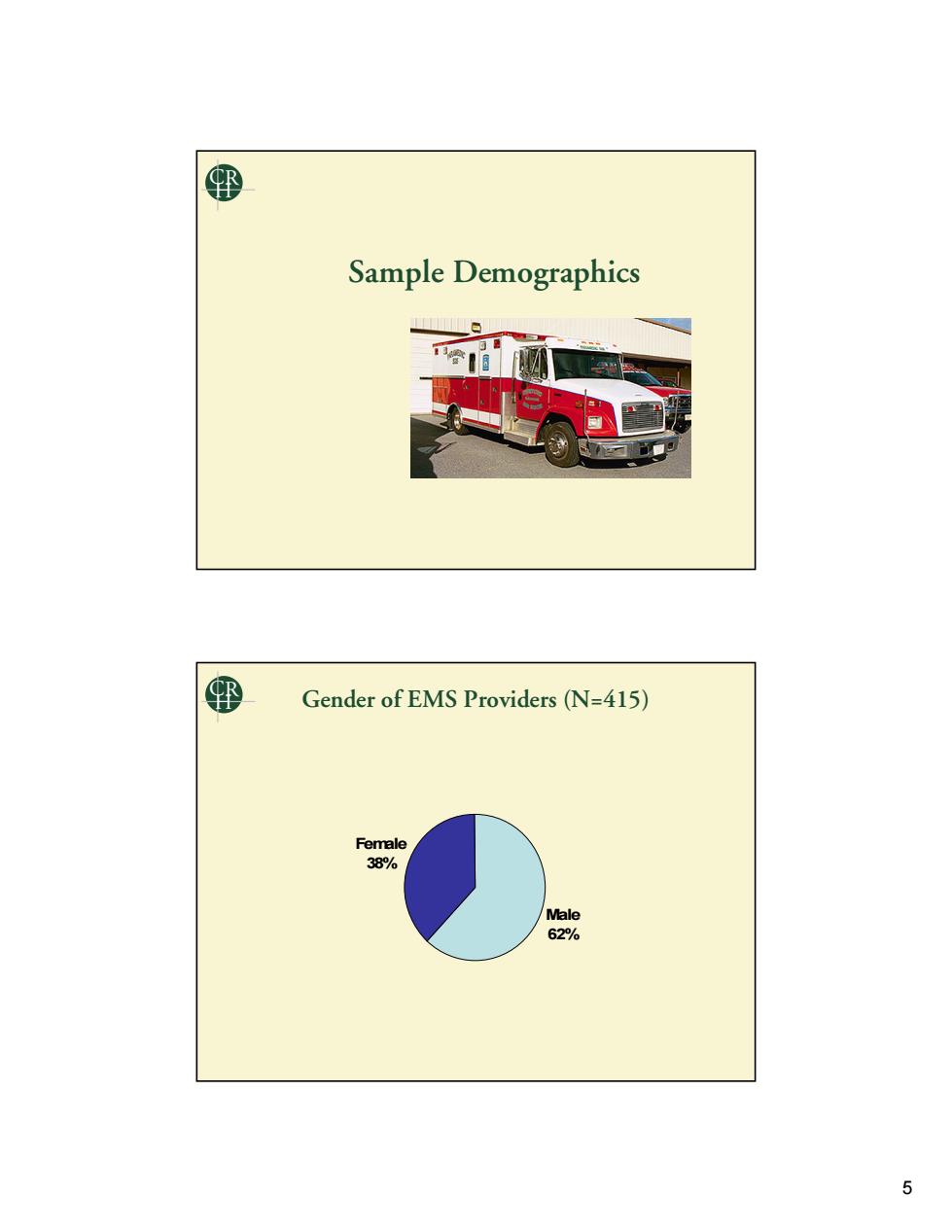
平 Sample Demographics 我 Gender of EMS Providers (N=415) 5
5 CR H Sample Demographics CR H Gender of EMS Providers (N=415) Male 62% Female 38%
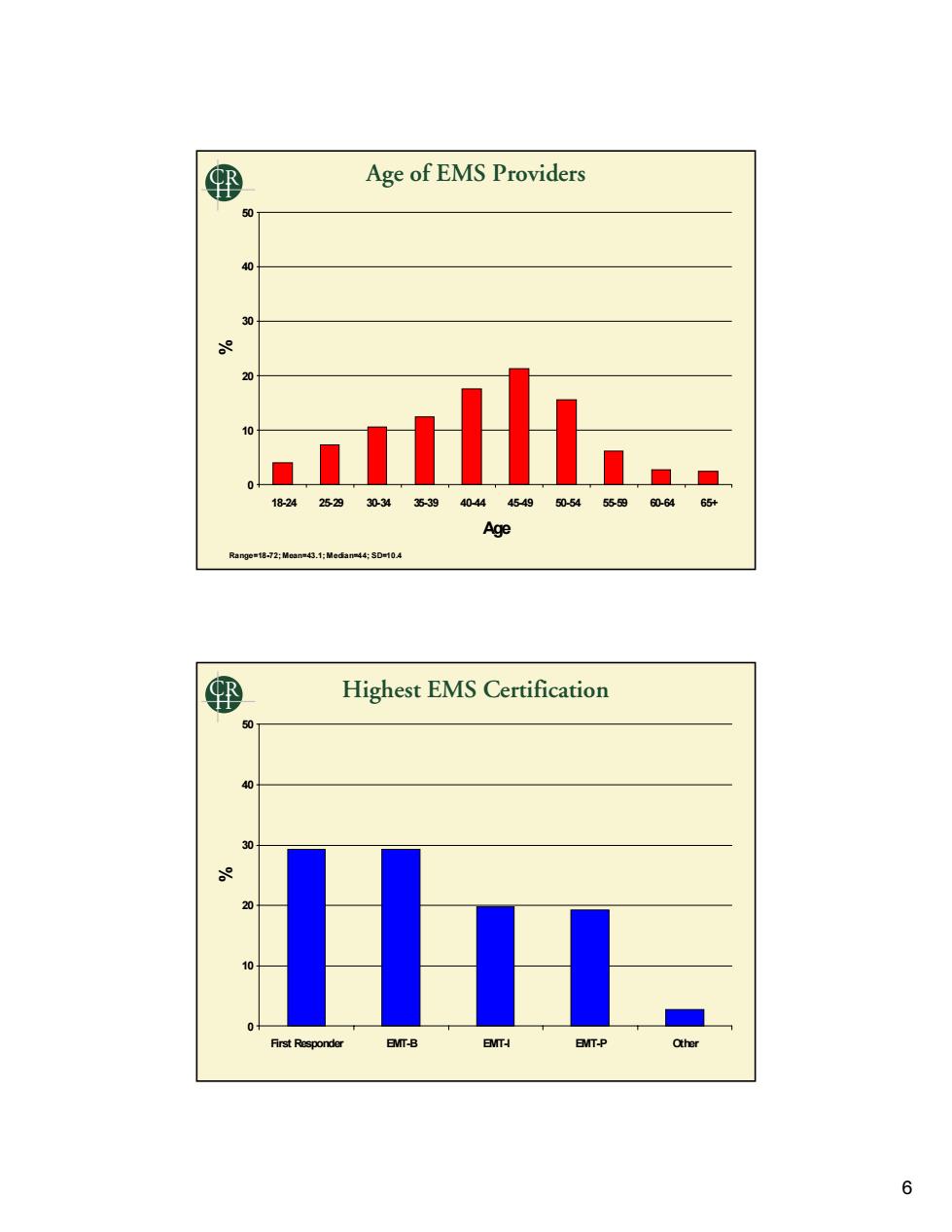
Age of EMS Providers 18-2425293034353940444549505455560-6465+ Age ES0-104 界 Highest EMS Certification . 6
6 CR H Age of EMS Providers 0 10 20 30 40 50 18-24 25-29 30-34 35-39 40-44 45-49 50-54 55-59 60-64 65+ Age % Range=18-72; Mean=43.1; Median=44; SD=10.4 CR H Highest EMS Certification 0 10 20 30 40 50 First Responder EMT-B EMT-I EMT-P Other %
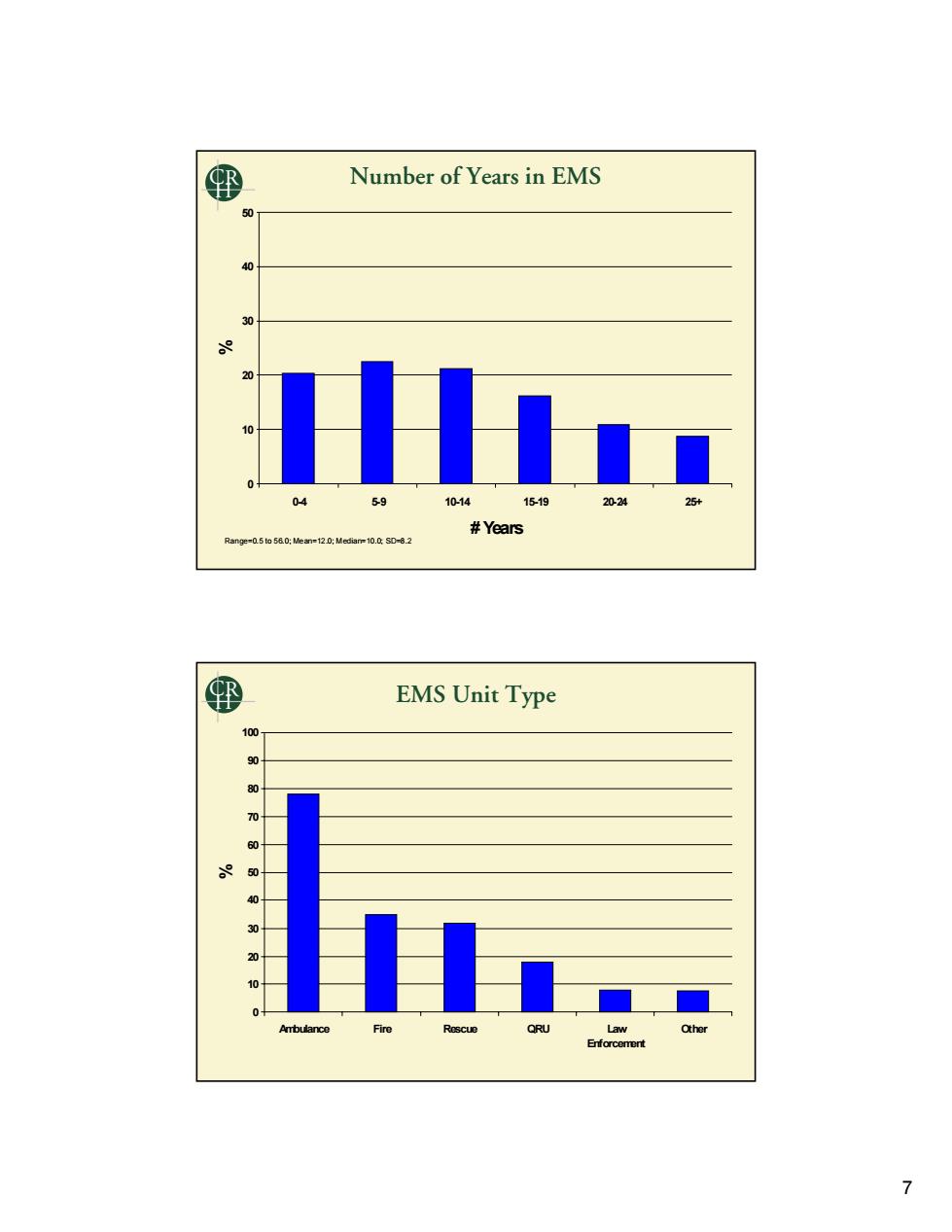
书 Number of Years in EMS 40 IH 10-14 1519 #Years 我 EMS Unit Type 7
7 CR H Number of Years in EMS 0 10 20 30 40 50 0-4 5-9 10-14 15-19 20-24 25+ # Years % Range=0.5 to 56.0; Mean=12.0; Median=10.0; SD=8.2 CR H EMS Unit Type 0 10 20 30 40 50 60 70 80 90 100 Ambulance Fire Rescue QRU Law Enforcement Other %

Experience with Pesticide Exposure 界 Number of Pesticide Incidents in EMS Career 3% 8
8 CR H Experience with Pesticide Exposure CR H Number of Pesticide Incidents in EMS Career None 83% 3-4 incidents 3% 5+ incidents 3% 1-2 incidents 11%
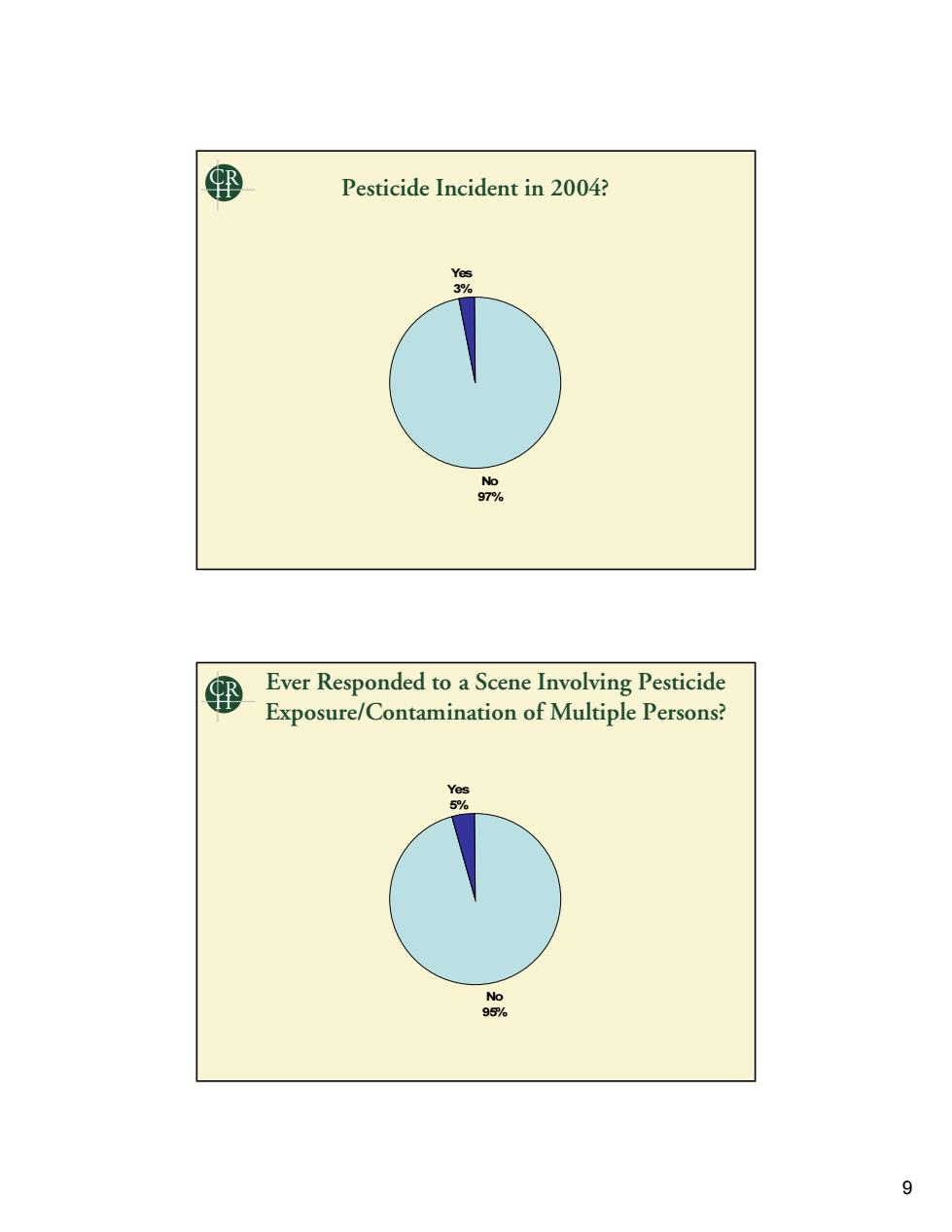
我 Pesticide Incident in 2004? Yes 界 Ever Responded to a Scene Involving Pesticide Exposure/Contamination of Multiple Persons? 。 9
9 CR H Pesticide Incident in 2004? No 97% Yes 3% CR H Ever Responded to a Scene Involving Pesticide Exposure/Contamination of Multiple Persons? No 95% Yes 5%
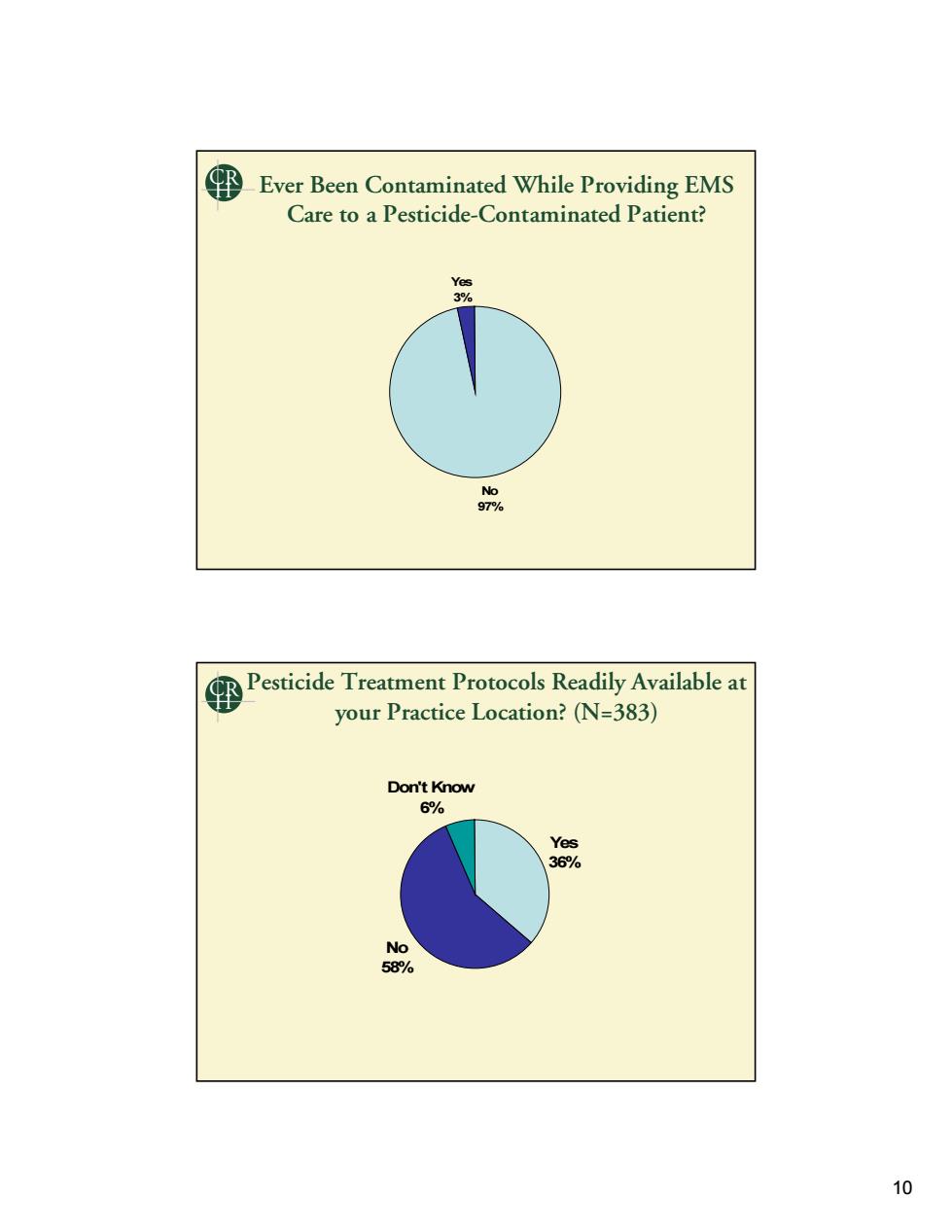
Ever Been Contaminated While Providing EMS Care to a Pesticide-Contaminated Patient? Yes Pesticide Treament Protocols Readily Available at your Practice Location?(N=383) Don't Know 69% 62 10
10 CR H Ever Been Contaminated While Providing EMS Care to a Pesticide-Contaminated Patient? No 97% Yes 3% CR H Pesticide Treatment Protocols Readily Available at your Practice Location? (N=383) Yes 36% No 58% Don't Know 6%